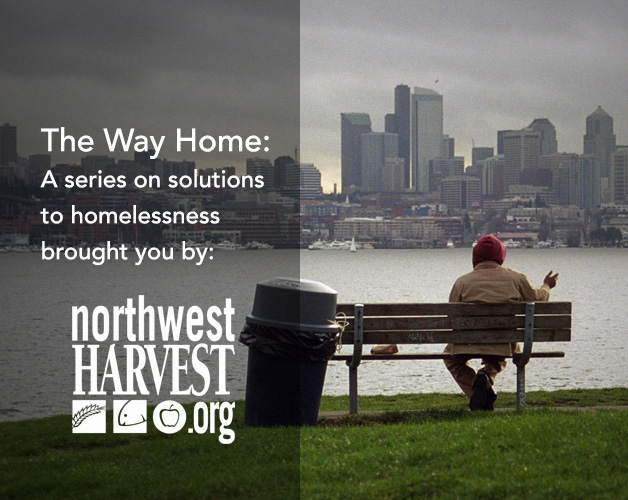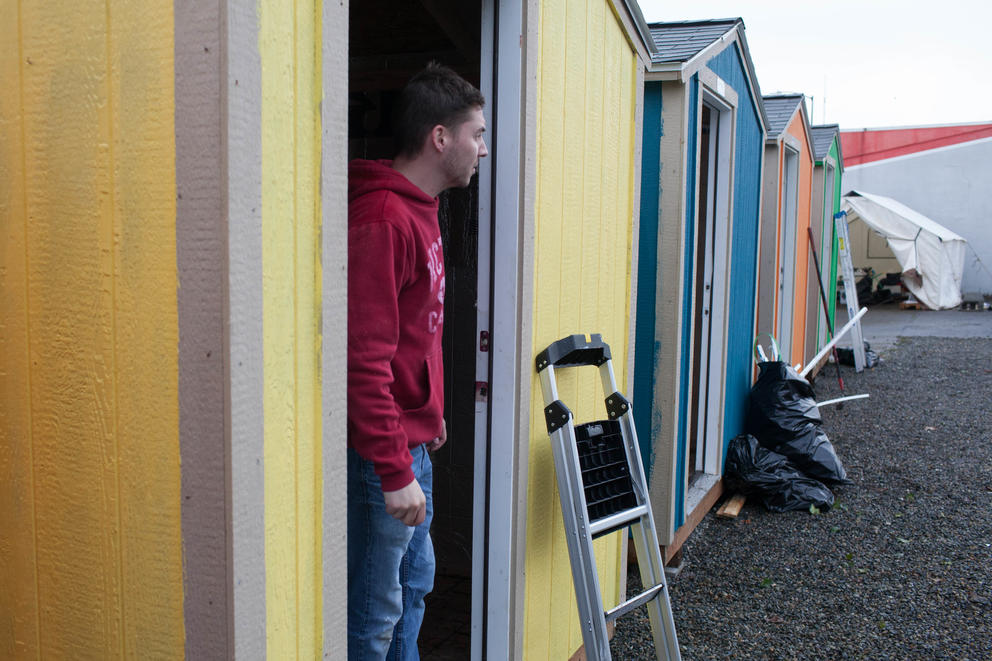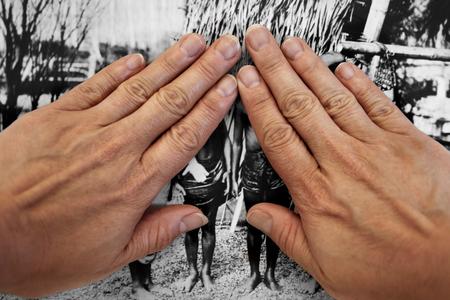In the search for housing for the homeless “we need more landlords to be engaged,” said Lauren McGowan, director of Financial Stability for United Way of King County. “We need a commitment from the community,” she appealed to the private sector at a panel discussion sponsored by the Downtown Seattle Association last month.
In other words: more apartments for those coming in off the streets.
“My guess is you’re losing more affordable housing each month than you’re creating,” pointed out panel member Barbara Poppe, a consultant who has been a major influence on Seattle’s plans to tackle homelessness.
She’s right. There are almost no places to “rehouse” the homeless. Certainly not the number needed. A search earlier this year found there were only 100 low-income apartments available in King County, and most of those units were in buildings operated by nonprofit community-based organizations, said Adrienne Quinn, director of the King County Department of Health and Human Services.
In January 2016, the countywide One Night Count found more than 4,500 people living outside or in cars — a number that included at least 500 families. Adding the number of homeless who are in emergency shelters and in transitional — but not permanent — housing, the number reaches 10,000 homeless people in King County last year. Those numbers are expected to rise when the results of this year’s One Night Count are released.
This despite a considerable commitment and investment of resources that leaves one wondering if there are at least short term alternatives we haven’t tried.
Since 1981, Seattle housing bond and levies have funded construction or renovation of 13,000 affordable apartments, plus residential assistance for 6,500 households. Over the next seven years, the 2016 Housing Levy will spend $200 million (along with other funding sources) to add 2,500 affordable housing units. Murray’s housing affordability plan includes upzones throughout the city linked to mandatory construction or funding of more low-income apartments. To build larger complexes, developers will have to include low-income apartments or pay into a fund to support low-income development. Planners say the program will produce 6,300 affordable units over the next ten years, though that’s a claim broadly disputed.
There have also been recent private commitments: $30 million pledged by Paul Allen for 100 apartments for homeless families with children; Amazon turning over five floors of a new building downtown for long-term housing for 200 unsheltered individuals. Such generosity is much welcomed and much needed.
But the numbers that will be housed are still small.
“You can’t build your way out of this,” says George Scarola, Murray’s director of programs for the homeless.
That’s a scary thought.
Housing supply remains the fundamental problem. Even a push for “rapid rehousing” — using rental assistance to place people directly and quickly into apartments — can only take place if housing stock is available in the first place.
What choices remain?
One option is “tiny houses,” which are now in place at five locations throughout the city. “One thousand units across the County would get a great number of people who are currently in tents or living in their cars into a dry space,” wrote Seattle City Councilmember Sally Bagshaw in a recent email. “Permanent homes are still the best solution, but tiny homes are better than wet tents or living in a car,” Bagshaw wrote.
Margaret Pageler and three other former City Council members — Jane Noland, Jan Drago and Sue Donaldson — are also advocating for more tiny houses. Real estate excise tax could provide money to “build tiny house villages, convert old motels into low-income housing and clean up and restore public open space,” they wrote in a Seattle Times op-ed.
Tiny house villages offer heat, sanitation and showers. They can make a big difference to someone working to change their life, says Sharon Lee, executive director of the Low Income Housing Institute (LIHI).
LIHI owns two of the five tiny house village sites now in use (the city owns the other three). Each house is built by volunteers for about $2,200. Right now, there are 111 occupied tiny houses at the five sites. With another site, Lee hopes there will be 180 to 200 tiny houses in use by year’s end. (The program was recently covered with telling testimony from residents about how tiny houses have rescued them from the street or tents in a video by The Wall Street Journal.)
In 2016, when LIHI worked with tiny house residents in Seattle, case managers helped 161 people secure subsidized or private market housing. A total of 106 people secured employment and 34 were reunited with family or friends, according to Lee.
Expanding the use of tiny houses — especially finding additional sites — won’t be easy. Siting them is difficult due to community opposition. Furthermore, there’s a Catch-22. By ordinance, each site must close and be disassembled after two years and not return to that same location for another year. Political will could change that, though siting tiny house villages could become more difficult if they were no longer officially declared “temporary.”
Both Bagshaw and Pageler mention the Port of Seattle’s mostly empty Terminal 5 in West Seattle as a possible site for tiny house villages, but there’s a catch there, too. The port can authorize non-marine uses only if they’re “temporary.” On church property, however, a tiny house village could stay indefinitely, Lee points out.
The largest problem, though, may well be the government agencies and charities that have been struggling to end homelessness without success. For them and for most elected officials temporary housing is not an acceptable solution and tiny houses are, admittedly, temporary. But as the agencies continue to be overwhelmed by the numbers living outside — in organized tent cities or wildcat encampments in greenbelts and under bridges — and enough affordable apartments can’t be found, tiny houses might be seen as a meaningful alternative for the homeless.
In the short run, that might be an achievable goal: get nearly all the homeless off the streets and into warm, dry, secure (you can lock the door; your stuff is safe) tiny houses instead of leaving them wrapped in blankets in downtown doorways or struggling against mud and crime in unauthorized tent encampments. Practically speaking, for the 4,500 men, women and young people living on the streets, tiny houses may well be the best first step toward a new life.
To use a tech industry buzzword, tiny houses are a “platform.” And for many of the homeless, they just might be a springboard.
—
This series made possible with support from Northwest Harvest. The views and opinions expressed in the media, articles, or comments on this article are those of the authors and do not reflect or represent the views and opinions held by Northwest Harvest.




